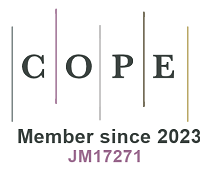A Special Topic of Water Emerging Contaminants & Nanoplastics
ISSN 2831-2597 (Online)
Submission deadline:
A Special Topic of Water Emerging Contaminants & Nanoplastics
ISSN 2831-2597 (Online)
Submission deadline:


All published articles are preserved here permanently:
https://www.portico.org/publishers/oae/